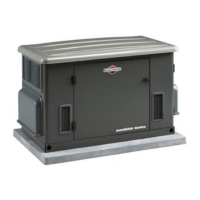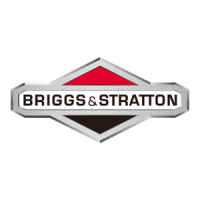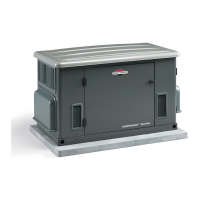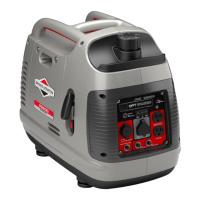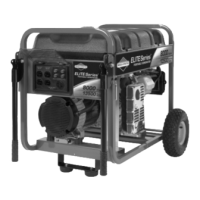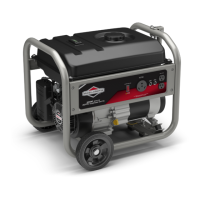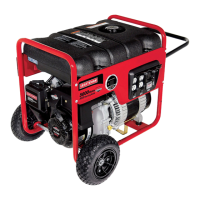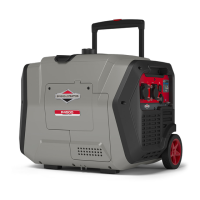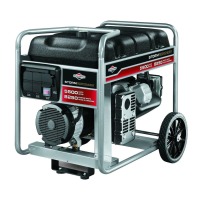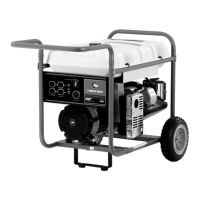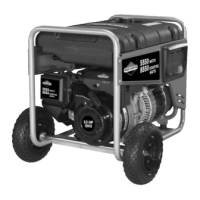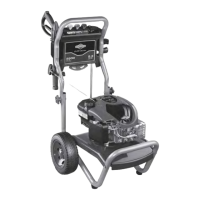10 BRIGGSandSTRATTON.COM
Access Ports
The generator is equipped with an enclosure that has
several access doors, as shown. The doors are named for a
significant component located behind them, as follows::
A Control Panel door
B Fuel Inlet Port (shown for reference)
C Oil Drain door
D Oil Fill door
E Exhaust Port (shown for reference)
The access doors must be installed whenever the unit is
running to assure proper cooling, reduce noise and for
added safety.
Each generator is shipped with a set of identical keys. These
keys fit the locks that secure the access ports.
To open access door:
1. Insert key into lock of access door handle and turn key
one quarter turn counterclockwise.
2. Grasp door’s handle and turn one quarter turn
counterclockwise to open. Remove key.
To close access door:
1. Close door and turn door’s handle one quarter turn
clockwise.
2. Insert key into lock of door handle and turn key one
quarter turn clockwise. Remove key.
The Gaseous Fuel System
The information below is provided to assist gaseous fuel
system technicians in planning installations. In no way
should this information be interpreted to conflict with
applicable fuel gas codes. Consult with your local fuel
supplier or Fire Marshall if questions or problems arise.
TO THE INSTALLER: Consult with the generator owner(s)
and convey any technical considerations that might
affect their installation plans before applying these
general guidelines.
The following general rules apply to gaseous fuel
system piping:
• Thepipingshouldbeofamaterialthatconformsto
federal and local codes, rigidly mounted and protected
against vibration.
• Pipingshouldbeprotectedfromphysicaldamage
where it passes through flower beds, shrub beds, and
other cultivated areas where damage could occur.
• Installtheflexible,gaseoushose(supplied)between
the generator fuel inlet port and rigid piping to prevent
thermal expansion or contraction from causing
excessive stress on the piping material.
B
A C D E
WARNING Contact with muffler and engine parts can
result in serious burns.
DO NOT touch hot parts and AVOID hot exhaust gases.•
Allow equipment to cool before touching.•
WARNING Propane and Natural Gas are extremely
flammable and explosive.
Fire or explosion can cause severe burns
or death.
LP gas is heavier than air and will settle in low areas.•
Natural gas is lighter than air and will collect in •
high areas.
The slightest spark can ignite these fuels and cause •
an explosion.
DO NOT light a cigarette or smoke.•
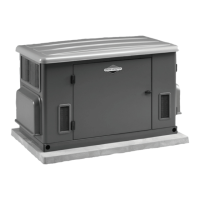
